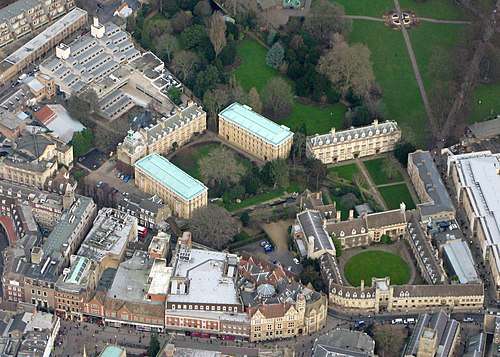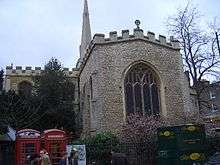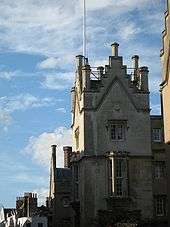Sidney Street, Cambridge
Sidney Street is a major street in central Cambridge, England.[1][2] It runs between Bridge Street at the junction with Jesus Lane to the northwest and St Andrew's Street at the junction with Hobson Street to the southeast.



On the northeastern side of the street is the University of Cambridge college Sidney Sussex College.[3] Opposite the college, Green Street, another shopping street, leads off to the west. To the southeast of the college is Sussex Street. On the corner is the tall and distinctive Montagu House.,[4] part of Sidney Sussex College.
Holy Trinity Church is on the southwestern side, on the southern corner with Market Street.[5]
Shops
The street has a number of shops, especially on the southwestern side. The buildings owned by Sidney Sussex, Gonville and Caius, and St John's colleges, for example Trinity College owns the building that houses the J Sainsbury food store, the main central Cambridge supermarket.[6] Other shops include Boots and Marks & Spencer.
The Lloyds Bank building was designed by the Victorian architect Alfred Waterhouse and built 1890–93.[7] Originally the building was part of Fosters' Bank and the name still exists over the doorway.
References
- Sidney Street, Cambridge City Council.
- Sidney Street, Cambridge Online.
- Sidney Sussex College: Sidney Street: gatehouse, Cambridge 2000.
- Sussex Street: Montagu House, Cambridge 2000.
- Market Street: Holy Trinity Church, Cambridge 2000.
- Trinity College: Sidney Street: Sainsbury's food store, Cambridge 2000.
- Sidney Street: Lloyds TSB Bank, Cambridge 2000.
